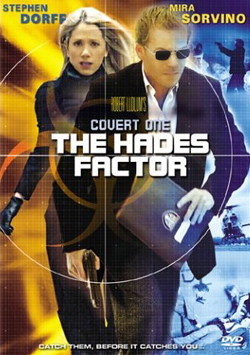| Covert One: The Hades Factor | |
|---|---|
 DVD Cover | |
| Based on | The Hades Factor by Gayle Lynds |
| Written by | Elwood Reid |
| Directed by | Mick Jackson |
| Starring | Stephen Dorff Mira Sorvino Blair Underwood Sophia Myles Jeffrey DeMunn Danny Huston Anjelica Huston |
| Theme music composer | J. Peter Robinson |
| Country of origin | United States |
| Original languages | English French German |
| Production | |
| Producer | Sherri Saito |
| Cinematography | Ivan Strasburg |
| Editor | Lori Jane Coleman |
| Running time | 158 minutes |
| Production company | Sony Pictures Television |
| Original release | |
| Network | CBS |
| Release | April 9, 2006 |
Covert One: The Hades Factor (a.k.a. Robert Ludlum's Covert One: The Hades Factor, The Hades Factor) is a made-for-TV thriller filmed in Toronto that first aired in 2006. Directed by Mick Jackson, the miniseries is loosely based on The Hades Factor , a 2000 novel written by Gayle Lynds as part of the Covert-One series created by Robert Ludlum.
Contents
The film depicts an Ebola outbreak in Berlin, which is connected to a bio-terrorism conspiracy.